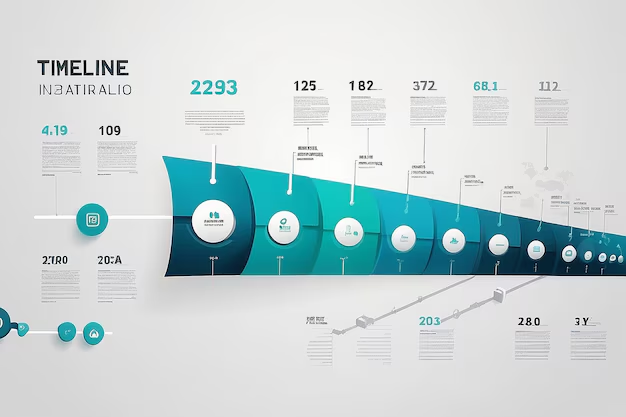Understanding Cataracts: How Fast Can They Grow?
Cataracts, a common eye condition, can significantly impact vision and quality of life. If you're wondering about how quickly cataracts can develop and what factors influence their growth, you're not alone. Many individuals seek clarity on how this prevalent condition might progress and what can be done to manage it effectively. This article explores these questions, delving into the nuances of cataract growth, while examining related topics that enhance your understanding.
🌟 What Are Cataracts?
Cataracts refer to the clouding of the lens inside the eye, leading to a decrease in vision. This cloudiness causes light to scatter or be blocked, which can disrupt clear vision. Cataracts typically develop slowly and can affect one or both eyes. They are often associated with aging, though they can also arise due to genetic factors, injury, or disease.
Types of Cataracts
Nuclear Cataracts: These form in the central zone, or nucleus, of the lens and typically result from aging.
Cortical Cataracts: These start on the lens periphery and work inward, forming a sort of "spokelike" opacity.
Posterior Subcapsular Cataracts: These occur at the back of the lens and progress more quickly than the other types.
Understanding these types helps contextualize the varying rates at which cataracts can grow.
⏳ How Fast Can Cataracts Grow?
The speed of cataract development can vary greatly among individuals, influenced by multiple factors. Generally, cataracts develop slowly over the years, but rapid changes can occur based on individual circumstances.
Factors Influencing Cataract Growth
- Age: The most significant factor. Most cataracts are age-related, forming slowly over decades.
- Genetics: Family history can play a role, with hereditary factors possibly accelerating development.
- Health Conditions: Diseases like diabetes can expedite cataract formation.
- Lifestyle Factors: Smoking, excessive alcohol use, and prolonged UV exposure can contribute to faster cataract growth.
Slow vs. Fast-Growing Cataracts
While most cataracts develop slowly, certain lifestyle or health conditions can expedite their growth. For instance, posterior subcapsular cataracts in younger individuals or those with steroid use may progress more rapidly.
📈 Observable Symptoms and Stages
It's crucial to recognize symptoms early to seek timely advice. Watch out for these indicators of cataract progression:
- Blurry Vision: Gradual increase in cloudiness or haze.
- Night Vision Issues: Difficulty seeing at night or needing more light for reading.
- Color Fading: Colors may appear less vibrant.
- Sensitivity to Light: Increased sensitivity to sunlight or lamps.
- Halos Around Lights: Seeing halos around bright objects.
As cataracts advance through different stages, these symptoms can become more pronounced, disrupting daily activities.
🔍 Identifying Risk Factors
Understanding your risk profile can guide lifestyle and healthcare decisions:
Lifestyle Recommendations
- Quit Smoking: Smoking cessation can slow the progression.
- Dietary Adjustments: Incorporate nutrients like vitamins C and E to support eye health.
- Regular Eye Exams: Annual eye checks can help monitor changes effectively.
- UV Protection: Use sunglasses to block harmful ultraviolet rays.
Simple Lifestyle Changes 📝
- Wear sunglasses outdoors 🌞
- Maintain a balanced diet with fruits and vegetables 🍎
- Regularly consult with an eye care professional 👓
Recognizing risk factors and observing these simple changes could potentially delay cataract development.
🩺 Managing Cataracts: When to See an Eye Care Professional
While lifestyle modifications can be helpful, professional guidance is indispensable:
Consultation Tips
- Frequent Check-Ins: Regular consultations with an eye specialist ensure any changes are noted early.
- Personalized Monitoring: Patients with diabetes or a family history of cataracts might require more frequent monitoring.
Being proactive with eye health can prevent cataracts from significantly impacting daily functions.
Eye Examination Components
- Visual Acuity Test: Assesses clarity and sharpness of vision.
- Dilated Eye Exam: Allows examination of the inner structures of the eye.
- Tonometry: Measures eye pressure, potentially indicating other health issues.
Routine checks can help manage cataracts effectively, timing interventions optimally.
🌈 Treatment Options
While surgery might be necessary for advanced cataracts, it's essential to explore all options:
Non-Surgical Approaches
- Prescription Glasses: Enhanced lenses can improve vision temporarily.
- Anti-Glare Sunglasses: Reduce light sensitivity.
Before pursuing surgery, these interventions might be beneficial for early-stage cataracts.
When Is Surgery Recommended?
Surgery is generally considered when cataracts begin to affect quality of life. An ophthalmologist will evaluate the need based on:
- Impact on daily activities
- Overall eye health
- Personal circumstances
Surgery is a common and safe procedure, but the decision should be made in consultation with a healthcare provider.
💡 Key Takeaways and Practical Tips
Navigating cataract progression can be manageable with the right approach. Here’s a quick summary to guide you:
- Monitor Your Vision: Keep track of any changes and consult professionals regularly.
- Lifestyle Matters: Adopt positive habits like wearing protective eyewear and maintaining a nutritious diet.
- Be Proactive: Early detection can prevent significant vision loss.
Quick Tips for Cataract Management 🚀
- Schedule regular eye check-ups 🗓️
- Protect eyes from excessive sunlight 🌞
- Prioritize a healthy, balanced diet 🥗
Understanding cataracts and their progression is an integral part of maintaining eye health, particularly as we age. By identifying potential risk factors and taking proactive steps, such as regular consultations with eye care professionals, individuals can effectively manage cataracts, preserving both vision and quality of life. Take these insights and integrate them into your approach to better eye health.
